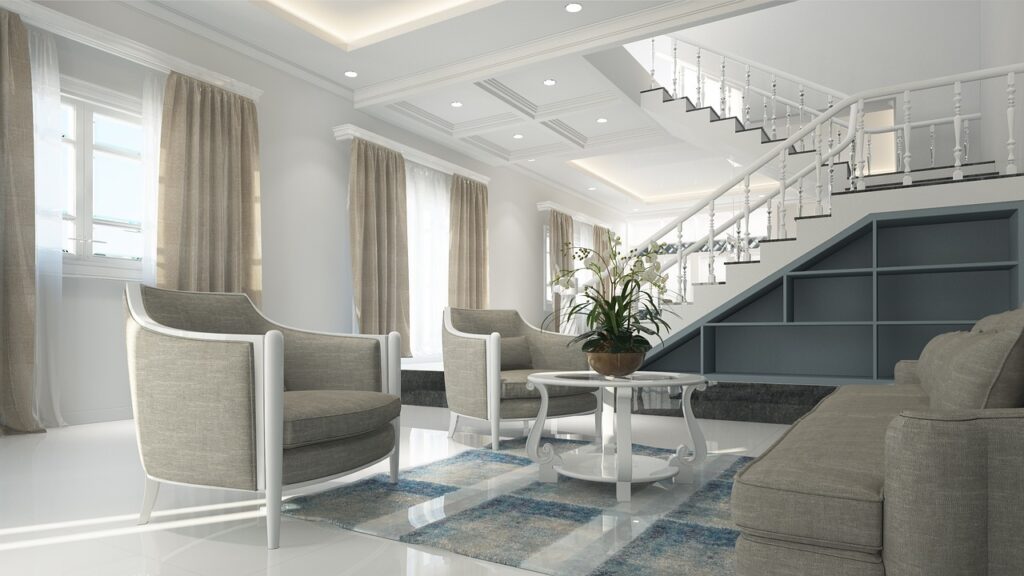
In today’s competitive market, building a strong brand is essential for interior designers who want to establish a reputation, connect with clients, and drive business growth. Whether you’re an established designer looking to expand your reach or a startup aiming to make a mark, implementing effective brand-building strategies can be the key to success. This article’ll explore detailed strategies that interior designers can use to grow their brand and ensure sustained business growth.
1. Understanding Your Brand Identity
Defining your brand identity is the foundation of any successful business strategy. Your brand identity encapsulates who you are, what you stand for, and how you want clients to perceive you. To establish a solid brand identity, consider the following:
- Define Your Unique Selling Proposition (USP): Identify what sets your interior design services apart. This could be your design philosophy, customer service approach, or special expertise, like eco-friendly designs or luxury interiors.
- Craft a Compelling Brand Story: A memorable brand story helps clients connect emotionally with your business. Your journey, inspirations, and achievements should be woven into your brand narrative.
- Create a Consistent Brand Voice and Tone: Establish a tone that reflects your brand’s personality—sophisticated, warm, or playful. Consistency in your brand’s messaging across all platforms helps in building recognition and trust.
2. Developing a Strong Visual Identity
Visual identity plays a significant role in defining your brand’s presence. Every visual element, from logos to color schemes and typography, should align with your brand’s essence. A cohesive and well-designed visual identity leaves a lasting impression and makes your brand memorable.
- Design a Logo that Reflects Your Brand Essence: A logo is the face of your brand. Choose elements, shapes, and colors that mirror your brand’s core values and design philosophy.
- Create a Cohesive Color Palette and Typography Scheme: Selecting a consistent color scheme and typography that matches your brand helps in establishing a recognizable style across all your materials.
- Use High-Quality Visuals in Marketing Materials: Interior design relies heavily on visuals. Ensure that photos, graphics, and marketing collateral are high-quality and reflect your level of expertise.
3. Building a Professional Website
A website serves as your digital storefront and is often the first point of contact for potential clients. A professional, well-optimized website can help interior designers showcase their portfolio, list their services, and communicate their brand effectively.
- Develop a User-Friendly Design: A clean and intuitive website design enhances the user experience, ensuring visitors can easily navigate through your portfolio, services, and contact information.
- Showcase Your Portfolio: Include a portfolio section with high-quality images of your projects, demonstrating your expertise and unique style. Categorize projects by style or type to help clients find examples relevant to their needs.
- Optimize for SEO: Use relevant keywords in your content, meta descriptions, and image alt texts to improve your website’s visibility on search engines. Local SEO strategies, like adding location-based keywords, can attract nearby clients.
- Include Testimonials and Case Studies: Social proof, like testimonials and detailed case studies, adds credibility and builds trust among potential clients.
4. Utilizing Social Media to Grow Your Brand
Social media is an invaluable tool for interior designers to showcase their work, engage with audiences, and build a loyal following. With platforms like Instagram, Pinterest, and Houzz, designers can reach a broader audience and attract potential clients.
- Choose the Right Platforms: Focus on visually-driven platforms like Instagram and Pinterest that align with interior design. Houzz is also a fantastic platform for designers to showcase their work and connect with clients.
- Create Engaging Content: Post a mix of content, including project highlights, design tips, behind-the-scenes shots, and client testimonials. Storytelling in your posts can engage followers and create a deeper connection.
- Use Hashtags Strategically: Use industry-specific and location-based hashtags to improve the visibility of your posts. This allows people searching for interior design ideas or services to discover your brand.
- Engage with Followers: Respond to comments and messages to foster community engagement. This builds a sense of trust and authenticity, making your brand more relatable.
5. Networking and Building Industry Relationships
Networking with professionals in the interior design industry can open doors to new opportunities and enhance your brand’s reputation. Strong industry connections can lead to partnerships, referrals, and collaborative projects.
- Attend Industry Events and Conferences: Participate in local and national design events to meet potential clients, vendors, and industry experts.
- Collaborate with Complementary Brands: Partner with brands or professionals, such as furniture suppliers, lighting experts, or real estate developers, to create collaborative projects or events.
- Join Industry Associations: Membership in industry organizations, like the American Society of Interior Designers (ASID), can enhance your credibility and provide networking opportunities.
6. Leveraging Content Marketing to Educate and Attract Clients
Content marketing is a powerful way to demonstrate expertise, build trust, and attract potential clients. By creating valuable content, you position yourself as an authority in the interior design industry.
- Start a Blog: Publish articles on topics like design trends, project insights, and tips for home decor. Blogs can drive organic traffic to your website and boost SEO.
- Offer Free Resources: Provide downloadable guides, eBooks, or checklists on interior design topics. These resources attract potential clients and keep your brand at the forefront of their minds.
- Create Video Content: Video content, such as project walkthroughs, design tips, or client testimonials, is highly engaging. By using tools to edit video online, you can produce polished content more efficiently. Platforms like YouTube and Instagram Reels can expand your reach and attract more followers.
7. Showcasing Client Testimonials and Success Stories
Client testimonials and success stories build trust and showcase your expertise. Positive reviews and detailed case studies illustrate your capability to deliver successful projects.
- Gather Reviews from Satisfied Clients: Encourage clients to leave reviews on platforms like Google My Business, Houzz, and social media pages.
- Feature Testimonials on Your Website and Social Media: Highlight glowing reviews on your website’s homepage and social media to showcase your satisfied clients.
- Develop Case Studies: Share detailed case studies of successful projects, including design challenges, solutions, and outcomes. This shows potential clients your problem-solving abilities and creative vision.
8. Building a Strong Referral Network
Word-of-mouth referrals are invaluable in the interior design industry, as clients often seek trusted recommendations. Building a strong referral network can drive business growth and establish a steady stream of clients.
- Develop Relationships with Real Estate Professionals: Connect with realtors, home stagers, and real estate agents who can refer clients to you for interior design services.
- Offer Incentives for Referrals: Encourage clients and partners to refer new clients by offering incentives like discounts or bonuses for successful referrals.
- Stay in Touch with Past Clients: Regularly check in with past clients to maintain positive relationships. Sending occasional updates or holiday greetings can keep your brand top-of-mind.
9. Establishing Yourself as an Industry Expert
Positioning yourself as an industry expert not only boosts credibility but also enhances client trust. By consistently sharing knowledge and insights, you reinforce your brand’s authority and attract more business.
- Host Webinars and Workshops: Share your knowledge by hosting webinars or workshops on design-related topics. This allows potential clients to experience your expertise firsthand.
- Get Featured in Industry Publications: Write for or get featured in design magazines, blogs, and industry publications. This enhances your credibility and helps you reach a broader audience.
- Engage in Public Speaking Opportunities: Speaking at industry events, conferences, or even local community gatherings builds your reputation as an expert.
10. Investing in Digital Marketing and Advertising
To expand your reach, digital marketing can be a game-changer. Strategic advertising on the right platforms can help you connect with clients who are actively searching for interior design services.
- Run Google Ads and Social Media Campaigns: Use targeted ads to reach potential clients based on demographics, interests, and search intent. Google Ads, Facebook, and Instagram ads can be highly effective for interior designers.
- Implement Remarketing Strategies: Use remarketing ads to reach users who have visited your website but didn’t convert. This encourages them to return and potentially hire your services.
- Analyze Campaign Performance: Regularly analyze your ad campaigns to understand what works and optimize for better results.
By implementing these strategies, you can effectively build your brand, enhance your visibility, and drive growth in your interior design business. Each step adds layers of credibility, trust, and recognition, setting the foundation for long-term success.





